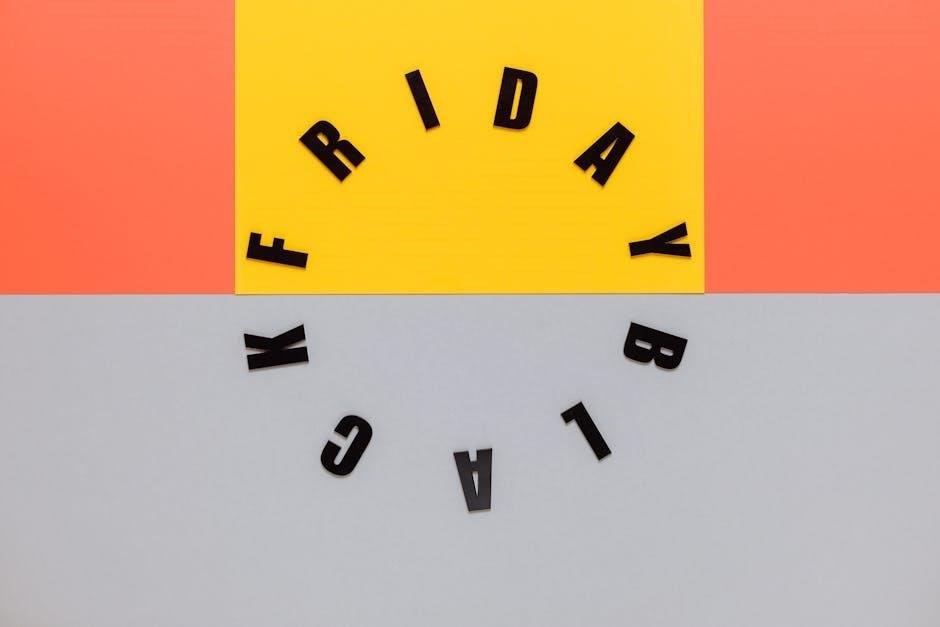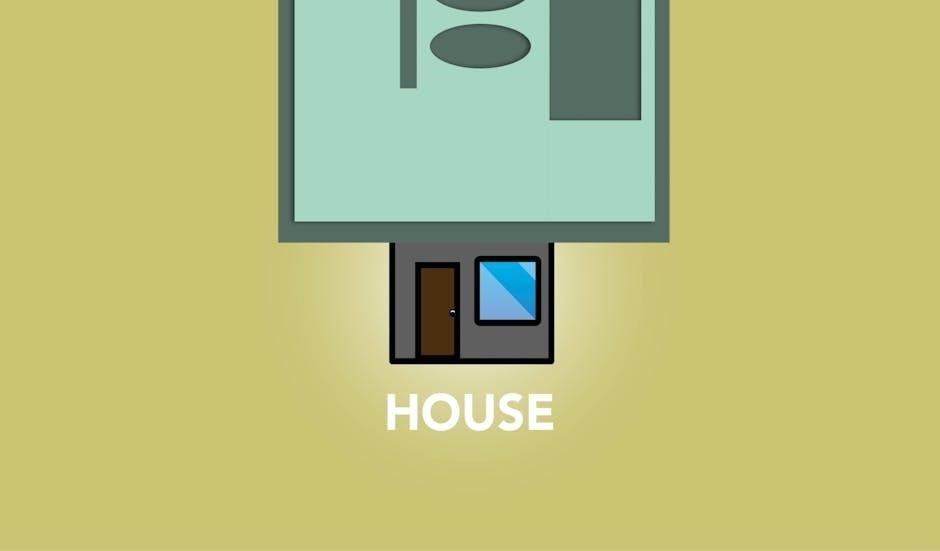Understanding graphic design pricing is essential for both designers and clients to ensure fair compensation and clear expectations. This guide explores factors influencing fees, pricing models, and industry standards to help make informed decisions.
1.1 Understanding the Importance of Graphic Design Fees
Graphic design fees are crucial as they reflect the value of creativity, time, and expertise invested in a project. Professional designers charge based on their skills, industry standards, and project complexity. Fees ensure quality outcomes, aligning with client expectations and budgets. This guide helps clarify pricing structures, including hourly rates, project-based, and value-based models, ensuring transparency for both designers and clients. Understanding these fees fosters trust and mutual benefit, making it easier to negotiate fair compensation for high-quality design services.
1.2 Purpose of a Graphic Design Pricing Guide
A graphic design pricing guide serves as a roadmap for designers and clients, offering clarity on costs and expectations. It helps designers establish fair rates based on experience, project scope, and industry standards. For clients, it provides transparency, ensuring they understand what they’re paying for. This guide also aids in budgeting, project planning, and decision-making, fostering a smoother collaboration. By outlining pricing models and service costs, it eliminates ambiguity, ensuring both parties are aligned and satisfied with the final outcome of the design project.
Factors Influencing Graphic Design Fees
Project complexity, designer expertise, market rates, and client requirements are key factors shaping graphic design fees, ensuring fair pricing that reflects the value and effort invested.
2.1 Project Complexity and Scope
Project complexity significantly impacts graphic design fees. Larger, intricate projects, such as branding or web design, require more time and resources, increasing costs. Simpler tasks like business card designs are priced lower. The scope, including revisions and deliverables, also influences pricing. Designers charge more for detailed creative briefs and multiple concepts. Additionally, urgency and specific tools or formats, like vector graphics, can elevate fees. Understanding the project’s scale ensures accurate pricing, aligning expectations between designers and clients. This approach guarantees fair compensation for the work involved, reflecting both effort and expertise.
2.2 Designer Experience and Expertise
A designer’s experience and expertise directly affect graphic design fees. Seasoned professionals with portfolios and specialized skills charge higher rates, reflecting their ability to deliver high-quality, tailored solutions. Junior designers, while capable, may offer lower prices due to less experience. Expertise in specific areas, like web design or branding, also influences pricing. Clients pay a premium for proven results and advanced technical knowledge. This tiered approach ensures that fees align with the value and reliability clients receive, making it a fair reflection of the designer’s investment in skills and career development over time.
2.3 Industry Standards and Market Rates
Graphic design fees are often guided by industry standards and market rates, which are influenced by regional costs, demand, and competition. These benchmarks help designers and clients understand typical pricing for various services. For example, logo design prices may range from $100 to $1,500, depending on complexity and design requirements. Freelancers and agencies often adjust their rates based on these standards to remain competitive while ensuring fair compensation for their work. Staying informed about current market rates enables professionals to set realistic fees that align with industry expectations and client budgets, fostering transparency and trust in the design process.

Common Graphic Design Pricing Models
Graphic design pricing models include hourly rates, project-based fees, and value-based pricing, each tailored to specific project needs and client budgets for flexibility and transparency.
3.1 Hourly Rate Pricing
Hourly rate pricing is a common model where designers charge clients based on the time spent on a project. Rates vary widely, from $25 to over $150 per hour, depending on experience, location, and complexity. This model is ideal for projects with unpredictable scopes or ongoing work. Clients benefit from transparency, as they only pay for actual hours worked. Designers, however, must accurately track time to ensure fair compensation. This approach balances flexibility and accountability, making it popular for both freelancers and agencies handling diverse client needs.
3.2 Project-Based Pricing
Project-based pricing involves charging a fixed fee for the completion of a specific project. This model is favored for its predictability, as clients know the total cost upfront. Designers estimate the time and resources required, ensuring the price aligns with the project’s scope. This approach is ideal for well-defined tasks like logo design or branding packages. It motivates designers to deliver efficient results, while clients appreciate the budget clarity. However, scope creep can pose challenges, making it essential to outline project details thoroughly in the initial agreement to avoid additional charges.
3.3 Value-Based Pricing
Value-based pricing structures fees according to the perceived value of the design work to the client. This model is popular among experienced designers, as it reflects the project’s complexity, creative input, and desired outcomes. Rates are tailored to the client’s budget and the anticipated impact of the design. For example, a logo for a startup might cost less than one for a large corporation due to differences in brand potential. This approach emphasizes transparency, ensuring clients understand how the pricing aligns with the value they receive, fostering trust and long-term partnerships.

Pricing for Specific Graphic Design Services
Logo design typically costs between $100-$500, while branding packages range from $500-$2,000. Web design pricing varies widely, from $300 for basic sites to $5,000+ for complex projects. Print design services, such as flyers or business cards, are often priced lower, starting at $50-$100 per design. These rates reflect industry standards, ensuring quality and meeting client expectations effectively.
4.1 Logo Design Pricing
Logo design pricing typically ranges from $100 to $500 for basic designs, while complex or custom logos can cost $300 to $1,500 or more. Factors influencing these rates include the designer’s expertise, the number of revisions, and the design’s complexity. Basic logos often include 2-3 concepts, while premium options may offer unlimited revisions and additional elements like color variations. Higher-priced logos frequently incorporate custom illustrations or advanced typography, ensuring a unique brand identity. These rates reflect industry standards, balancing quality and client expectations effectively.
4.2 Branding and Identity Design Pricing
Branding and identity design pricing generally ranges from $500 to $5,000, depending on the scope and complexity. Basic packages include a logo, color palette, and typography, while advanced packages add stationery, social media assets, and brand guidelines. Experienced designers may charge higher rates for comprehensive strategies and custom illustrations. The cost reflects the time invested in research, conceptualization, and revisions. This pricing model ensures a cohesive visual identity, aligning with the client’s brand goals and values, making it a valuable investment for long-term brand recognition and consistency.
4.3 Web Design and Development Pricing
Web design and development pricing varies widely, ranging from $500 for basic sites to $10,000 or more for complex, custom solutions. Costs depend on the website’s size, functionality, and whether it’s built from scratch or using templates. E-commerce sites, with features like payment gateways, typically cost $3,000 to $15,000. Hourly rates for web designers range from $50 to $150, while project-based pricing is common for larger scopes. Additional fees may apply for ongoing maintenance, updates, or advanced integrations, ensuring the final product meets the client’s digital goals and user experience expectations.
4.4 Print Design Pricing
Print design pricing varies based on the type of material and complexity. Business cards typically cost $50-$75 for single-sided designs, while flyers range from $50-$150. Banners and posters start at $80-$200, depending on size and detail. Stationery design, including letterheads, begins at $100. Pricing may increase for specialized finishes like foil stamping or embossing. Rush orders or complex layouts can also add to the cost. Designers often charge hourly rates of $50-$150 for print projects, ensuring high-quality output tailored to client needs. Additional revisions or design iterations may incur extra fees.

Freelance vs. Agency Pricing
Freelance pricing is cost-effective and flexible, often hourly or project-based. Agencies offer comprehensive services with higher fees, leveraging teams for complex projects. Choose based on project needs.
5.1 Freelance Graphic Designer Pricing
Freelance graphic designers typically charge hourly rates ranging from $25 to $150, depending on experience and expertise. Some prefer project-based pricing, offering tailored solutions for specific needs. This flexibility allows clients to budget effectively, knowing exactly what they’re paying for. Freelancers often provide personalized service, direct communication, and adaptability, making them a cost-effective option for smaller projects or businesses seeking unique designs. Their pricing reflects the scope, complexity, and time required, ensuring transparency and value for clients seeking custom graphic design services.
5.2 Graphic Design Agency Pricing
Graphic design agencies usually charge higher rates than freelancers, with pricing models that reflect their team’s expertise and resources. Hourly rates can range from $75 to $250, while project-based fees often start at $500 and scale with complexity. Agencies offer comprehensive services, including brand strategy, web design, and print materials, providing a one-stop solution for clients. Their pricing structures may include retainers for ongoing work or package deals, ensuring clients receive cohesive and professional designs tailored to their brand needs, with the added benefit of collaborative creativity and reliability.
5.3 Key Differences and Considerations
When choosing between freelance and agency pricing, consider factors like project size, budget, and required expertise. Freelancers often offer lower rates for smaller projects, while agencies provide comprehensive services for larger, more complex tasks. Agencies may charge higher due to overhead costs and team collaboration, but they ensure consistency and scalability. For brands needing a full suite of design services, agencies are ideal. However, freelancers are cost-effective for specific, one-off projects. Evaluate your needs, timeline, and budget to decide which option aligns best with your goals and resources.

How to Calculate Your Graphic Design Costs
Calculate costs by breaking down the project scope, estimating time, and considering resources. Complexity and designer expertise also influence pricing, ensuring accurate budget planning.
6.1 Breaking Down the Project Scope
Breaking down the project scope involves identifying key deliverables, timelines, and requirements. This helps in understanding the complexity and effort needed, ensuring accurate cost estimation. By outlining specific tasks, designers can allocate resources effectively, avoiding scope creep. Clients benefit from clear expectations, while designers can justify fees based on detailed breakdowns. This step is crucial for both parties to align on objectives and budget, ensuring successful project execution and satisfaction.
6.2 Estimating Time and Resources
Estimating time and resources is critical for accurate pricing. Designers analyze each project’s complexity, breaking tasks into hours or days. They consider their expertise, tools, and any additional support needed. Hourly rates are applied to time estimates, while fixed fees are based on total effort. Clear communication with clients ensures expectations are met, and resources are allocated efficiently. This step ensures transparency, helping clients understand the value behind the costs and avoiding project overruns.

Client Considerations for Graphic Design Fees
Clients should understand their budgets, industry standards, and project scope to align expectations with designer fees. Clear communication ensures transparency and value in the final design outcome.
7.1 Understanding Client Budgets
Understanding client budgets is crucial for aligning expectations and ensuring successful project outcomes. Clients must assess their financial capacity and communicate it clearly to designers. This helps prevent cost overruns and ensures the project stays within agreed limits. Budget discussions should also cover the scope of work, design complexity, and desired quality to avoid misunderstandings. By setting realistic financial boundaries, clients can prioritize their needs and make informed decisions about where to allocate resources. Clear communication fosters trust and ensures the final deliverables meet both creative and budgetary expectations.
